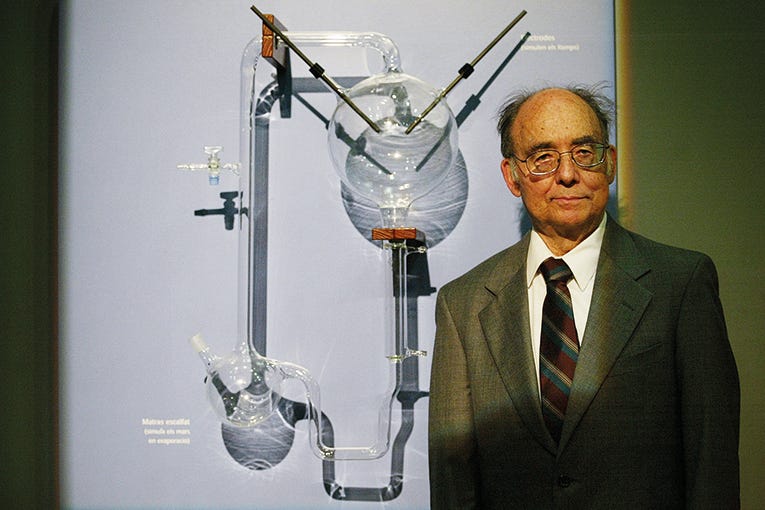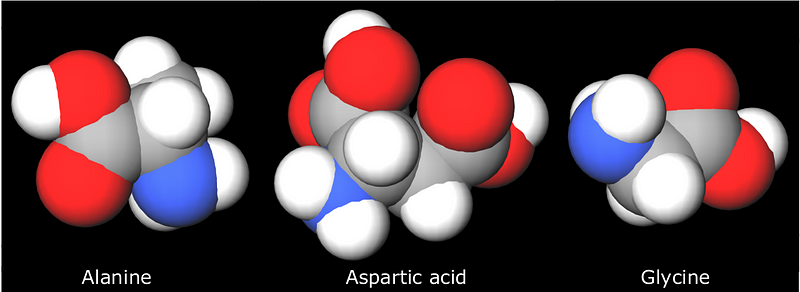# The Impact of Miller's Experiment on the Study of Life's Origins
Written on
Chapter 1: Theoretical Foundations
In the year 1924, a Soviet botanist and biochemist named Alexander Oparin published a groundbreaking book titled The Origin of Life, which would later influence the field of origin of life (OL) research. Oparin proposed that life emerged from basic chemical reactions involving simple gases, such as methane, ammonia, hydrogen, and water—elements believed to have constituted the early atmosphere of Earth.
Oparin theorized that these gases reacted to produce simple organic compounds, which gradually became more complex and diverse. Over time, these increasingly intricate molecules underwent a Darwinian process of competition and natural selection, accumulating in the primordial oceans to form a "primordial soup." Within this soup, these chemicals self-organized and ultimately led to the formation of the first proto-cell. He posited that such processes were not exclusive to Earth but could occur throughout the universe.
While modern researchers do not fully endorse all aspects of Oparin's hypothesis, particularly regarding the composition of the early atmosphere, which is now thought to include primarily nitrogen, carbon dioxide, hydrogen, and water vapor, his foundational ideas still resonate strongly in contemporary OL research.
Section 1.1: The Role of Stanley Miller
Inspired by Oparin's concepts, Stanley Miller, a Ph.D. candidate at the University of Chicago in the early 1950s, conducted an iconic experiment that would forever alter the landscape of OL research. His experimental setup resembled a classic mad scientist’s lab, characterized by unusual glassware linked by an intricate network of tubes, Bunsen burners heating vibrant liquids, and electrodes generating sparks in a bottle filled with glowing gases.

This experiment demonstrated that a combination of simple gases under specific conditions, mimicking those of a lifeless early Earth, could yield more complex organic molecules, such as amino acids, the fundamental components of proteins.
Miller, born on March 7, 1930, in Oakland, California, did not initially appear destined for greatness in scientific circles. Despite being recognized for his chemistry skills in high school, he lacked confidence and followed his older brother to the University of California, Berkeley, to study chemistry. Following financial struggles after his father's passing, he accepted a teaching assistantship at the University of Chicago, where he began his Ph.D. program.
Initially unsure about his research focus, Miller found inspiration during a seminar led by Nobel laureate Harold Urey, who discussed the origins of the solar system and life through organic chemistry. This lecture motivated Miller to shift his focus and join Urey’s lab in September 1952.
Section 1.2: Conducting the Experiment
Miller's experiment utilized the simple gases hypothesized to be present in Earth's early atmosphere: methane, ammonia, water vapor, and hydrogen. A boiling flask simulated the primitive oceans, while electrodes produced electrical discharges to recreate lightning.

From this combination of gases, Miller discovered a range of organic compounds, including amino acids such as aspartic acid, glycine, and alanine. Initially, the mixture changed color from pink to deep red within just a day, and over the years, Miller synthesized nearly all biologically relevant amino acids and various other organic compounds, adapting his methods in response to evolving hypotheses about Earth's atmospheric chemistry.

Miller's findings were corroborated by other scientists who demonstrated that alternative energy sources, such as ionizing radiation, could also produce complex organic compounds from simple precursors. However, some critics argued that Miller's results depended on a reducing atmosphere, suggesting that organic compounds may have extraterrestrial origins.
Evidence supporting this hypothesis emerged with the discovery of organic materials in carbonaceous chondritic meteorites, which reflected the early chemistry of the solar system. The Murchison meteorite, which fell in Australia in 1969, contained amino acids and other organic materials, ruling out terrestrial contamination.
Miller's experiment provided the first experimental proof that natural processes could generate the organic compounds essential for life, suggesting that such synthesis might occur both on Earth and on other celestial bodies.
Chapter 2: Urey's Influence and Subsequent Research
The first video titled "What Was The Miller-Urey Experiment?" explores the significance of Miller's work and its implications for our understanding of life's origins.
Miller's Ph.D. supervisor, Harold Urey, played a crucial role in both the atomic bomb's development during World War II and in the field of cosmochemistry, which he coined. His earlier research on isotope oxygen-18 informed his theories about the distribution of chemical elements on Earth and their stellar origins.
Miller completed his Ph.D. in 1954 and joined Urey at the University of California at San Diego, where he would later become a full professor. In 1972, Miller revisited his original experiment using advanced analytical techniques, discovering that he had synthesized 33 amino acids, expanding on his earlier findings.
The second video titled "Where Did Life Come From? (feat. PBS Space Time and Eons!)" delves into the ongoing research and discussions surrounding the origins of life.
Miller's work inspired numerous organic chemists to further investigate the origins of life on Earth and beyond. Significant studies, such as those by Spanish scientist Joan Oro, demonstrated the synthesis of nucleotides, the building blocks of DNA and RNA. However, researchers still grapple with understanding how these organic precursors self-assemble into more complex structures necessary for life.
The field currently considers three primary hypotheses for the origins of complex organic materials: natural synthesis on early Earth, extraterrestrial contributions from impacting bodies, and deep-sea hydrothermal vents. Despite ongoing research, no definitive answers have emerged, leaving the inquiry open-ended.
This research continues to be guided by the foundational methods established by Miller, who passed away in 2007, with his last paper published posthumously in 2008.
Conclusion: A Legacy of Inquiry
Miller's experiment not only advanced our understanding of life's origins but also opened up new avenues for scientific exploration. As researchers continue to investigate the complexities of how life emerged from simple molecules, the groundwork laid by Miller remains invaluable.
For further reading on the contributions of Oparin and the quest for the origins of life, consider exploring:
- Pioneering the Search for the Origin of Life: Oparin's foundational work in the field.
- LUCA — The Last Universal Common Ancestor: Insights into the earliest forms of life on Earth.
Thank you for engaging with this exploration of Miller's groundbreaking research! Please feel free to share your thoughts and insights.